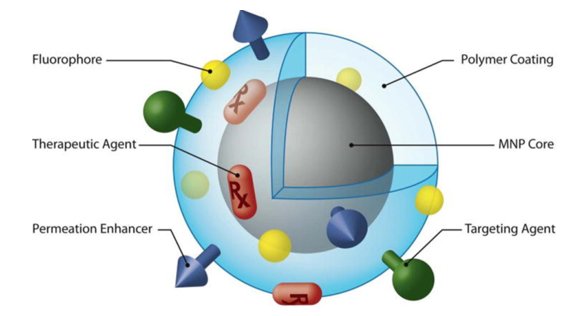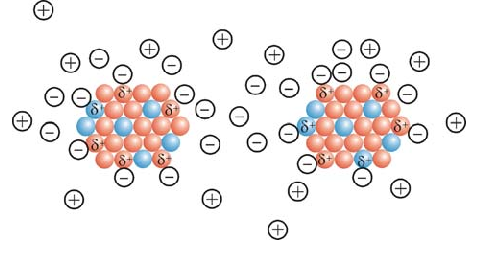The structure of electro-magnetic (multifunctional) nanoparticles and nanoparticles (two metals) based on nano- micro electronics PHD (educational-research doctorate)
Researcher and author: PhD student Afshin Rashid
Note: Metal alloys or double metallic nanoparticles have a high paramagnetic property that makes them suitable for electro-magnetic nano-molecules or nano-electromagnetic carriers . In addition, the electromagnetic property of the surface of these nanoparticles allows surface active materials to be placed on the surface of their nanoparticles , which can be used to dissolve nanoparticles .
Surface coating is an integral part of electromagnetic nanoparticles that can be used. Although nanoparticles do not adsorb each other due to their paramagnetic properties, due to the high energy of the surfaces, the electromagnetic nanoparticles tend to accumulate . Nano-molecular electrostatic stability is not suitable for nanoparticles; although repeated repulsion on the surface of nanoparticles can prevent their accumulation, they are neutralized these times in the presence of a catalyst or other electrolytes in the internal environment of electromagnetic nanoparticles.
Active electromagnetic properties in nanoparticle coatings, such as barriers , prevent their accumulation, and chemical activation creates suitable and efficient properties for nanoparticles . There is a variety of molecular weights and geometric orientations on the surface of nanoparticles in various forms. Layers that completely activate electromagnetic nanoparticles. It prevents the nanoparticles from accumulating on top of each other. In addition to organic coatings, the core-shell structure is also used for optimal application of electromagnetic nanoparticles . The structure engineering of magnetic nanoparticles is the same as the factorization of particle surfaces, which can have several factors or several (ligands). Uncovered and coated nanoparticles can absorb nanoparticles (two metals) with a variety of electromagnetic molecules and create an active process.
Electromagnetic nanoparticles are particles less than 100 nanometers that have magnetic properties in the presence of an external magnetic field. The simplest structure of nanoparticles, including a magnetic nucleus (such as iron oxide, nickel, and cobalt) and various non-magnetic coatings of chemical compounds in nanomaterials, their molecules and constituent atoms, have magnetic properties. Simply put, elements such as iron, cobalt, nickel, and their alloys that are absorbed by the magnet are called nanomagnetic materials.
Conclusion:
The classification of nano-magnetic materials is based on the acceptability of nano-magnetic particles (the magnetization of nanoparticles). On the basis of nano-materials into three groups: ferromagnetic, paramagnetic nanoparticles and nano Myknnd.fra diamagnetic classification process dipole moment (metal) and several metal in nano-materials, nano-diamagnetic Active (nano-electro- magnetic) is zero and in the presence of The magnetic field induces bipolar (metallic) torque in them, but the direction of these induced dipoles is opposite to the direction of the external magnetic field.





